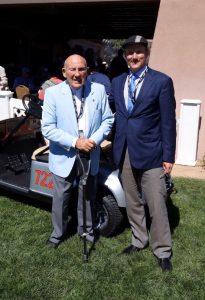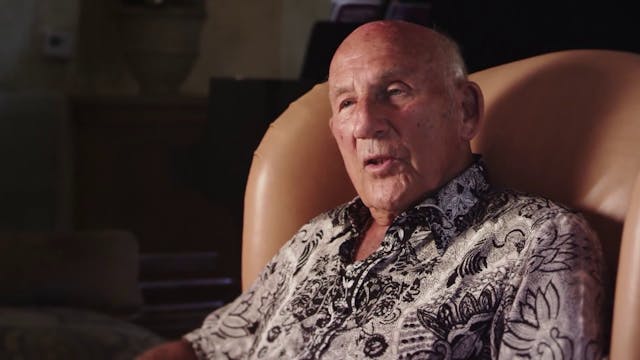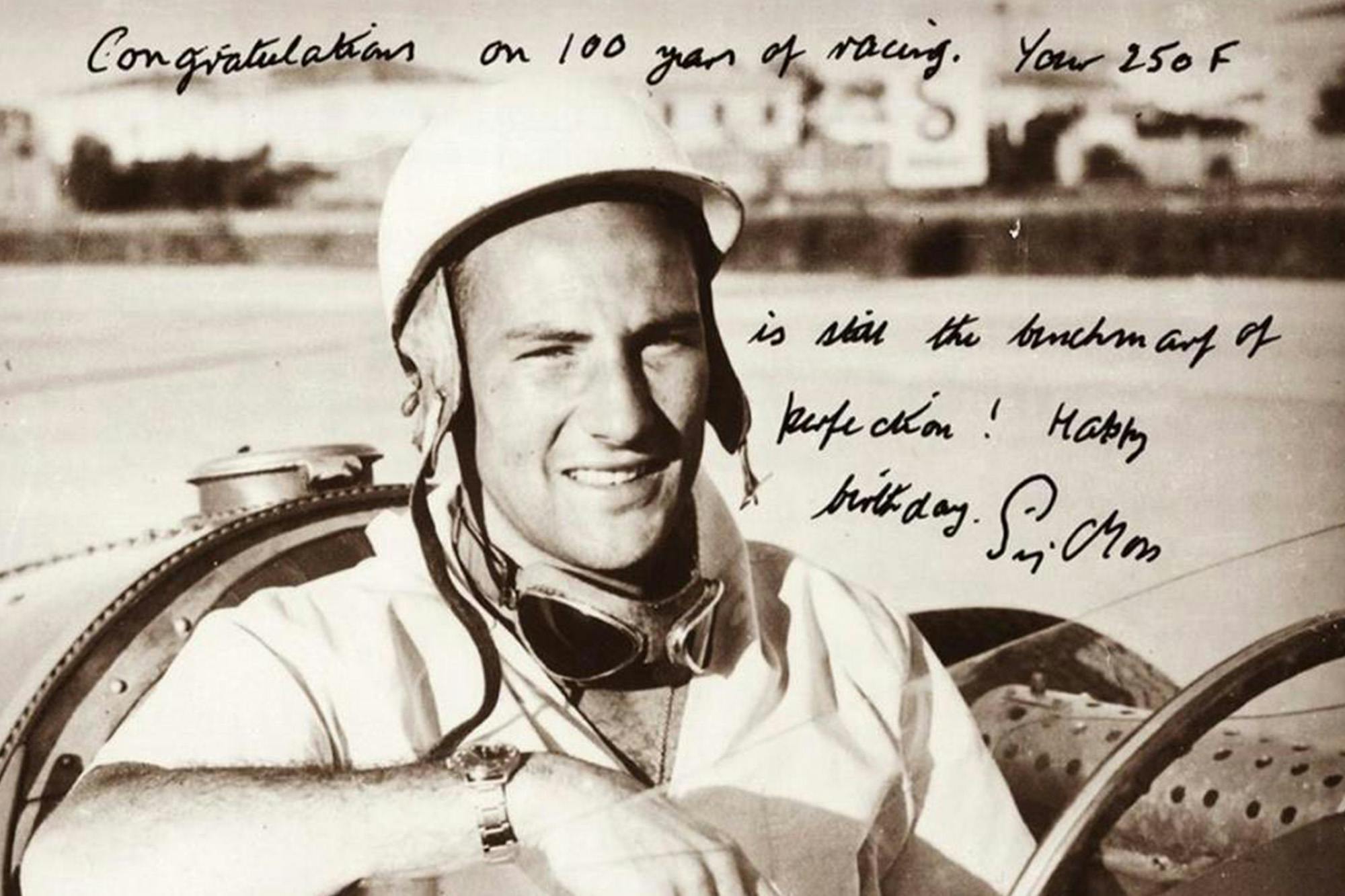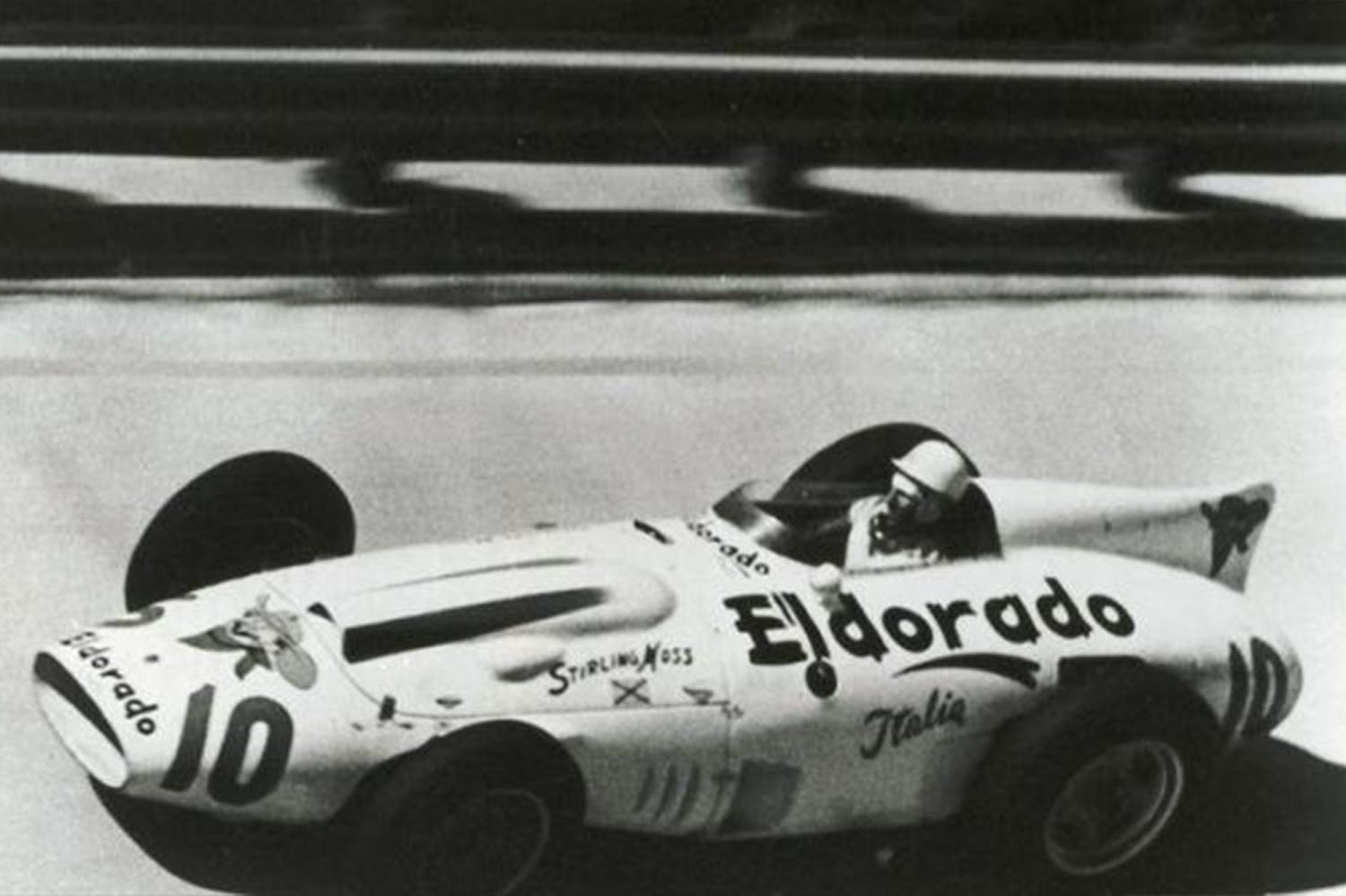Why we remember Sir Stirling Moss as auto racing royalty
Stirling Moss was the closest thing to royalty that many of us will ever meet, so it was only fitting that Prince Charles felt it appropriate to knight him years ago—long after racing fans did. Sir Stirling, who died on April 12 at the age of 90, didn’t race professionally after 1962; a horrific crash at Goodwood ended his career. But his reputation behind the wheel grew to such heights that five decades later, his name still means something, even to enthusiasts too young to have ever seen him in action.
Legends have a way of doing that.
Moss may be known as “the finest F1 driver to never win a World Championship,” but what he and navigator Denis Jenkinson accomplished at the 1955 Mille Miglia was not only record-breaking, it was surreal—averaging nearly 100 mph over 992 miles of narrow, twisting Italian roads in a Mercedes-Benz 300SLR to win the grueling race by more than a half hour. That alone punched Moss’s ticket into the motorsports elite—and perhaps scored him a seat at the head of the table, even if he never won at Le Mans or raised the Formula 1 World Championship trophy.
It was with that astonishing Mille Miglia performance in mind that I had the pleasure of meeting Sir Stirling Moss at Pebble Beach in 2012, fortunate enough to be part of a film crew afforded a 30-minute interview with the British racing icon. We waited in the living area of a house overlooking the Pacific Ocean, which was incredible enough to begin with, and when Moss arrived—along with his lovely wife, Lady Suzie Moss—the next half hour felt like a dream. Moss was kind, gracious, and approachable, but he maintained a royal air that was palpable. It was a very special moment, and it didn’t need to be said.
“I’d like to be remembered as a racer,” he said, words that still ring in my head, “because racing and being a racer are two different things. If you are a real racer … it’s built into you that you’re fighting someone, and you take every benefit that you can.”
Moss also explained how he would get into the heads of his fellow competitors and how he managed to concentrate for hours and hours, lap after lap.
“I would try to make them think it was easier for me than it was for them,” he said. “I’d see them around the hairpin, and every time I’d sort of wave across, you know, like I’m enjoying this—yet I was actually flat out. Every time I would try and do a perfect lap, which of course you can’t do. Then you’d come out with maybe six inches to spare on the outside, which I should have used up, and I’d say, ‘I’ll try to do the perfect lap from here … It takes tremendous concentration. It’s very difficult to do. It’s made easier because my life was at stake, so therefore it made it more important.”
Moss called former teammate and rival Juan Manuel Fangio the greatest driver of all time, and he admitted there was no shame in finishing second to the man he referred to as “Maestro.” Asked their secret, Moss grinned and replied, “I would like to think it was because we were a bit better than them (the other drivers).”
A look back on the life and career of a motor racing legend#F1 pic.twitter.com/hp8YC7Xdu3
— Formula 1 (@F1) April 13, 2020
As the 1962 season opened, Moss was still at the height of his prowess as a driver and, presumably, still had a good chance at the Formula 1 championship. Then, on April 23, 1962, in a non-championship race for Formula 1 cars at Goodwood, Moss inexplicably left the road in his Lotus-Climax. He received near-fatal head injuries and did not regain full consciousness for a month. In 1963, when he finally tested a racing car for the first time since his accident, he felt that he was no longer the driver he’d once been and chose to retire.
Like so many top-flight drivers, Moss stepped from the cockpit into the broadcast booth, providing color commentary for ABC’s Wide World of Sports racing broadcasts from 1962–80. Moss was also a regular competitor in historic racing, driving both his own cars and those provided by others.
Great Britain recognized him with The Most Excellent Order of the British Empire in 1959, and he was bestowed knighthood in 2000.

Hagerty CEO McKeel Hagerty says Moss was a hero of his growing up, which made it even more special when he was fortunate enough to serve with him as a concours judge.
“At a tribute dinner late in his life, I asked Stirling what his dad—who was also a racing driver—would think of his career,” Hagerty wrote on Facebook. “He laughed and said, ‘He would still think it’s like a fairy tale … and that he couldn’t believe that people would actually pay me to have dinner with them.’ He always had that puckish sense of humor. A life well lived.”
Added noted automotive author Colin Comer: “Sir Stirling will obviously always be remembered as one of the greatest drivers of all time. But also, and perhaps more importantly, one of the greatest gentlemen of all time. He was a hell of a guy—smart, fit, always willing to share his time and his fantastic sense of humor. A few years back I came to own a 1950s sports racing car that he famously drove. When asked if he could jot down a note with his memories of it, he wrote, ‘Colin, I absolutely remember driving your car! I think.’
“Sir Stirling, you will be missed for many reasons, most importantly for what you did for the sport of motor racing and how you always led by example.”





